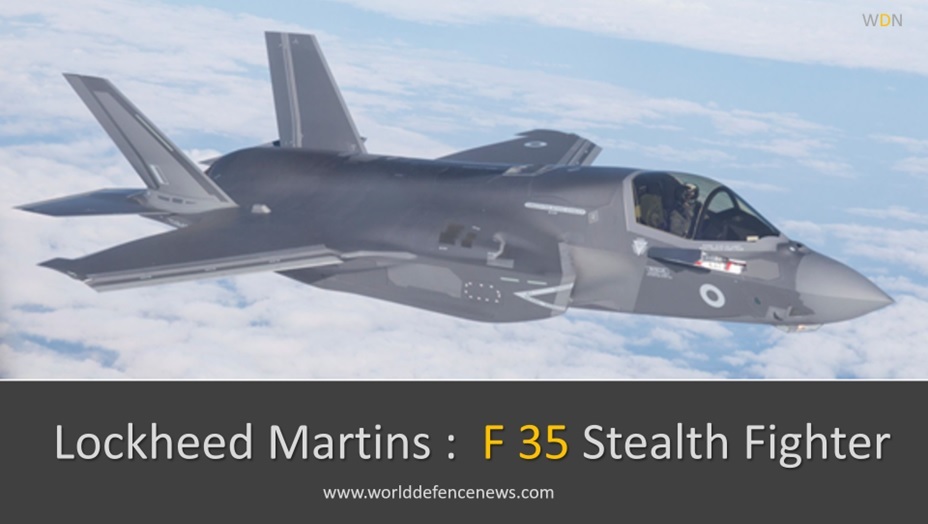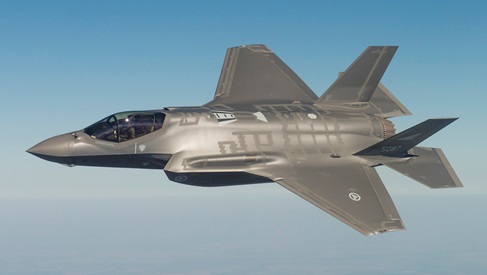
F-35 Fighter
Lockheed Martin, F-35 fighter Jet is a Fifth-Generation Multi-Role World’s Most Advanced Stealth Aircraft.
The F-35 fighter lightning II is the world’s most advanced fifth-generation multi-role fighter aircraft. It is a fifth-generation stealth fighter jet designed to perform a variety of missions, including air superiority, ground attack, and intelligence, surveillance, and reconnaissance (ISR). The US air force is the largest operator of F35 fighters.
It is the result of a global partnership led by the United States and is manufactured by Lockheed Martin. The F-35 comes in three variants: the F-35A, which is designed for conventional take-off and landing; the F-35B, which is capable of short take off and vertical landing; and the F-35C, which is optimized for carrier operations.
The aircraft design features advanced stealth technology, including a low observable airframe and advanced sensors and avionics. It also has advanced weapons systems and can be fitted with a range of air-to-air and air-to-ground weapons. The F-35 is currently in service with several countries, including the United States, the United Kingdom, Italy, Australia, and Japan.
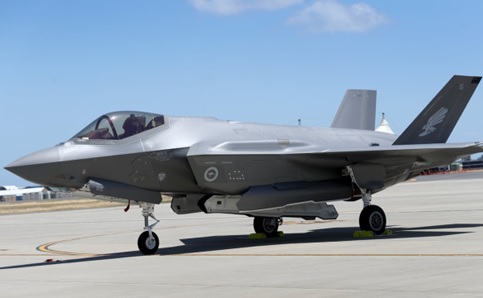
The F-35 fighter jet is one of the most advanced and technologically sophisticated aircraft in the world. It was designed and developed to provide exceptional combat capabilities across a broad spectrum of missions, including air-to-air combat, air-to-ground attack, and intelligence, surveillance, and reconnaissance (ISR) operations.
The F-35 is the result of a global partnership led by the United States and is manufactured by Lockheed Martin, a major defense contractor.
The F-35 fighter jet is available in three variants, the F-35A, F-35B, and F-35C, each designed to suit specific mission requirements. The F-35A is a conventional take-off and landing (CTOL) variant, designed to operate from conventional runways.
The F-35B is a short take-off and vertical landing (STOVL) variant that is capable of operating from small or unprepared runways and landing vertically, making it well-suited for use in a wide range of environments, including austere locations. The F-35C is a carrier-based variant optimized for use on aircraft carriers, with a strengthened airframe, larger wings, and foldable wingtips.
One of the most significant features of the F-35 is its advanced stealth technology. The aircraft is designed to have a low observable airframe, which reduces its radar signature and makes it harder to detect by enemy radar systems.
The F-35 also features advanced sensors and avionics that enable it to gather and transmit critical intelligence in real-time. Its advanced communication systems enable it to seamlessly integrate with other aircraft and ground-based systems, making it a valuable asset in complex combat scenarios.
The F-35 also boasts advanced weapons systems, including internal weapon bays that can carry a range of air-to-air and air-to-ground weapons, such as guided bombs, missiles, and rockets. The aircraft is equipped with a powerful 25mm cannon, making it capable of engaging ground targets as well as other aircraft.
The F-35 is currently in service with several countries, including the United States, the United Kingdom, Italy, Australia, and Japan, among others. Its advanced capabilities have made it a valuable asset in modern warfare, where it can be deployed in a variety of roles to provide air superiority, ground support, and intelligence gathering capabilities. The F-35 is set to remain a vital part of the military’s arsenal for years to come.
Lockheed Martins F-35 Stealth Fighter
F-35 Fighter Jet Advanced Technical Features
The F-35 Lightning II is a fifth-generation fighter aircraft packed with most sophisticated technology and advanced technical features. The F-35’s advanced technical features make it one of the most advanced fighter aircraft in the world, capable of carrying out a wide range of missions with a high degree of effectiveness.
Some of the main technical features of the F-35 include:
1. Stealth Technology
The F-35 features advanced stealth technology that allows the aircraft to evade radar detection and operate in areas with a high threat of enemy air defense.
2. Advanced Sensors And Avionics
The F-35 is equipped with advanced sensors and avionics that provide the pilot with enhanced situational awareness and enable the aircraft to operate in a networked environment.
3. Supersonic Speed
The F-35 is capable of reaching speeds of up to Mach 1.6. The F-35 Lightning II is capable of reaching supersonic speeds, which is defined as speeds greater than Mach 1.0 or approximately 760 mph at sea level. The maximum speed of the F-35 varies depending on the variant of the aircraft and the altitude at which it is flying.
The F-35A variant, which is designed for conventional take-off and landing, has a maximum speed of approximately Mach 1.6 or 1,200 mph at high altitude. The F-35B and F-35C variants, which are designed for short take-off and vertical landing (STOVL) and carrier-based operations, respectively, have slightly lower maximum speeds due to their different design requirements.
The supersonic speed of the F-35 is enabled by its powerful Pratt & Whitney F135 engine, which is capable of generating up to 43,000 pounds of thrust. The aircraft’s advanced aerodynamics, including its stealthy design, also contribute to its ability to reach supersonic speeds.
4. Long Operation Range
The operational range of the F-35 Lightning II varies depending on the variant of the aircraft and the mission profile. The F-35A variant, which is designed for conventional take-off and landing, has a combat radius of approximately 590 nautical miles (680 miles) on internal fuel. With external fuel tanks, the F-35A’s range can be extended to over 1,200 nautical miles (1,380 miles).
The F-35B variant, which is designed for short take-off and vertical landing (STOVL), has a shorter range than the F-35A due to its different design requirements. The F-35B has a combat radius of approximately 450 nautical miles (520 miles) on internal fuel, which can be extended to over 900 nautical miles (1,040 miles) with external fuel tanks.
The F-35C variant, which is designed for carrier-based operations, has a longer range than the F-35A and F-35B due to its larger internal fuel capacity. The F-35C has a combat radius of approximately 600 nautical miles (690 miles) on internal fuel, which can be extended to over 1,200 nautical miles (1,380 miles) with external fuel tanks.
5. Multi-role Capabilities
The F-35 is designed to carry out a variety of missions, including air-to-air combat, air-to-ground attack, reconnaissance, and electronic warfare.
6. Vertical Take-off And landing (VTOL) Capabilities
The F-35B variant is capable of VTOL operations, enabling it to take off and land vertically in areas where runways are not available.
7. Advanced Weapons Systems
The F-35 is equipped with a variety of advanced weapons systems, including air-to-air missiles, air-to-ground missiles, and a 25mm cannon.
8. Advanced Materials
The F-35 is constructed using advanced materials, including composite materials and titanium, that provide the aircraft with strength and durability while minimizing its weight.
Lockheed Martins F-35 Stealth Fighter
F35 Vertical Take-off And Landing (VTOL) Capabilities
The F-35 Lightning II is a fifth-generation multirole fighter aircraft designed and developed by Lockheed Martin. The F-35 is capable of short take-off and vertical landing (STOVL), as well as conventional take-off and landing (CTOL) and arrested recovery landing (ARL) operations.
The F-35B variant, which is operated by the US Marine Corps and several other countries, has a vertical take-off and landing (VTOL) capability. This is achieved through the use of a lift fan, located behind the cockpit, which provides vertical lift, and a thrust vectoring nozzle, which allows the aircraft to pivot its engine exhaust downward for vertical landing.
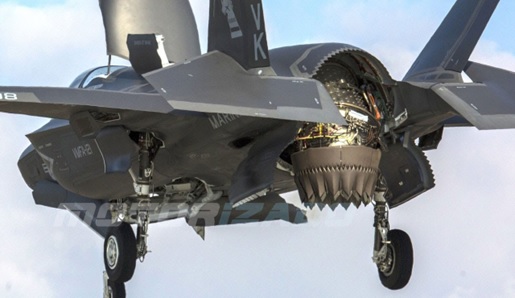
The F-35B’s VTOL capability allows it to operate from amphibious assault ships, small-deck aircraft carriers, and austere forward operating bases. It also enables the aircraft to perform missions that other aircraft cannot, such as providing close air support to ground troops in mountainous or urban environments where traditional runways are not available.
The F-35B’s VTOL capability is a significant advantage in terms of its versatility and operational flexibility, allowing it to operate in a wider range of environments and perform a broader range of missions than other fighter aircraft.
Lockheed Martins F-35 Stealth Fighter
F-35 Advanced Sensors And Avionics
The F-35 Lightning II features advanced sensors and avionics that provide the pilot with enhanced situational awareness and enable the aircraft to operate in a networked environment.
One of the key sensors on the F-35 is the AN/APG-81 active electronically scanned array (AESA) radar. This radar provides the pilot with a comprehensive picture of the battlefield, including ground targets, air targets, and potential threats. The radar can also track multiple targets simultaneously and can operate in a variety of weather conditions.
The F-35 also features an advanced electro-optical targeting system (EOTS), which includes a high-resolution infrared sensor, a laser designator, and a tracking system. The EOTS provides the pilot with enhanced targeting capabilities, allowing the F-35 to engage ground targets with a high degree of precision.
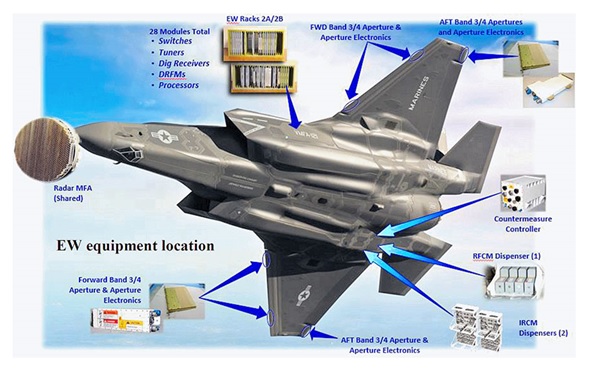
In addition to its sensors, the F-35 features advanced avionics that allow the aircraft to operate in a networked environment. The aircraft is equipped with a communication system that enables it to share information with other planes and ground stations. This provides the pilot with a comprehensive picture of the battlefield and enables the F-35 to carry out missions with a high degree of situational awareness.
The advanced sensors and avionics on the F-35 are key factors in the aircraft’s ability to operate in complex environments and carry out missions with a high degree of success.
F-35 Advanced Stealth Technology
The F-35 Lightning II is a fifth-generation fighter aircraft that features advanced stealth technology. This technology allows the aircraft to evade radar detection and operate in areas with a high threat of enemy air defense.
One of the key features of the F-35’s stealth technology is its shape, which is designed to reduce the aircraft’s radar cross-section. The aircraft’s surfaces are angled to deflect radar waves away from the source, making it more difficult for radar systems to detect the plane. Additionally, the F-35 uses advanced materials and coatings that absorb and scatter radar waves, further reducing its detectability.
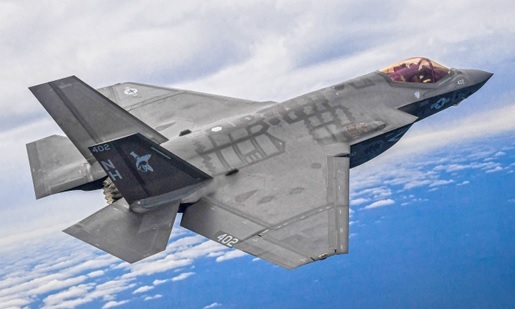
The F-35 also uses advanced avionics and sensors to enhance its situational awareness and enable it to operate in a networked environment. This allows the aircraft to share information with other planes and ground stations, providing a more comprehensive picture of the battlefield.
The F-35’s advanced stealth technology is a key factor in its ability to operate in contested airspace and carry out missions with a high degree of survivability.
Lockheed Martins F-35 Stealth Fighter
F-35 Fighter Advanced Weapons And Armaments
The F-35 Lightning II is equipped with a wide variety of advanced weapons, including air-to-air missiles, air-to-ground missiles, bombs, and a 25mm cannon.
The F-35’s advanced weapons systems enable it to carry out a wide range of missions, from air-to-air combat to air-to-ground attack and reconnaissance, with a high degree of effectiveness. The aircraft’s weapons are integrated into its advanced avionics and sensor systems, providing the pilot with enhanced situational awareness, and enabling the F-35 to engage targets with a high degree of precision.
Some of the main weapons carried by the F-35 include:
1. AIM-120 AMRAAM
The AIM-120 Advanced Medium Range Air-to-Air Missile (AMRAAM) is a beyond-visual-range air-to-air missile used by the United States Air Force, Navy, and Marine Corps, as well as several other countries. It was designed to replace the AIM-7 Sparrow missile and has been in service since the early 1990s.
The AIM-120 AMRAAM is a fire-and-forget missile, meaning that once it has been launched, the pilot can continue flying the aircraft while the missile guides itself to the target using its onboard active radar seeker. The missile can engage targets at ranges of up to 100 kilometers (62 miles) and at altitudes of up to 30 kilometres (98,425 feet).

2. AIM-9X Sidewinder
The AIM-9X Sidewinder is a short-range, air-to-air missile used by the United States Armed Forces and several other countries. It is the latest version of the Sidewinder missile family, which has been in service since the 1950s.
The AIM-9X is designed to track and destroy enemy aircraft using infrared seeker technology. It can be launched from a variety of aircraft, including fighter jets and helicopters, and is designed to engage targets at close range, typically within visual range of the launching aircraft.
The missile features several advanced technologies, including improved seeker sensitivity and resolution, an advanced guidance system, and a high-explosive warhead. It also has the ability to lock onto targets from different angles, which allows it to engage targets in a wider range of situations.
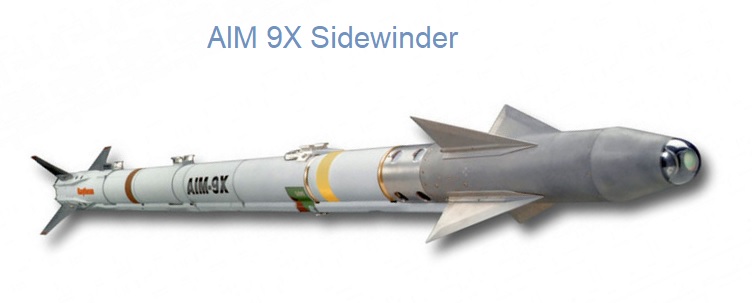
3. Joint Strike Missile (JSM)
The Joint Strike Missile (JSM) is a long-range, air-to-ground missile developed by the Norwegian defense company Kongsberg Defence & Aerospace. It is designed to be carried by the F-35 Lightning II Joint Strike Fighter, as well as other modern fighter aircraft.
The JSM is an advanced missile that combines stealth technology, advanced guidance systems, and a high explosive warhead. It is designed to be effective against a variety of ground targets, including ships, land-based vehicles, and buildings.
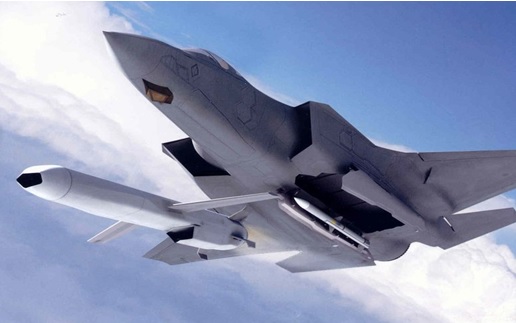
One of the key features of the JSM is its ability to operate in highly contested environments. It has a low radar signature, which makes it difficult for enemy air defenses to detect and track. Additionally, it has the ability to navigate around obstacles and perform evasive maneuvers to avoid enemy countermeasures.
4. Paveway IV
Paveway IV is a precision-guided munition developed by Raytheon UK, a subsidiary of the American defense contractor Raytheon. It is a bomb guidance kit that can be attached to a wide range of bombs to convert them into precision-guided weapons.
Paveway IV uses GPS and laser guidance technology to accurately guide bombs to their intended targets. It has a modular design, which allows it to be adapted to different types of bombs and aircraft. It is compatible with a wide range of aircraft, including the Eurofighter Typhoon, F-16 Fighting Falcon, and the F-35 Lightning II.
5. GBU-12 Paveway II
The GBU-12 Paveway II is a precision-guided bomb developed by Lockheed Martin. It is a 500-pound bomb that is designed to be used by a variety of military aircraft, including the F-15E Strike Eagle, F-16 Fighting Falcon, and A-10 Thunderbolt II.
The GBU-12 Paveway II uses laser guidance technology to accurately guide the bomb to its intended target. The laser guidance system is controlled by a targeting pod attached to the aircraft, which illuminates the target with a laser beam. The bomb then homes in on the reflected laser light to hit the target precisely.
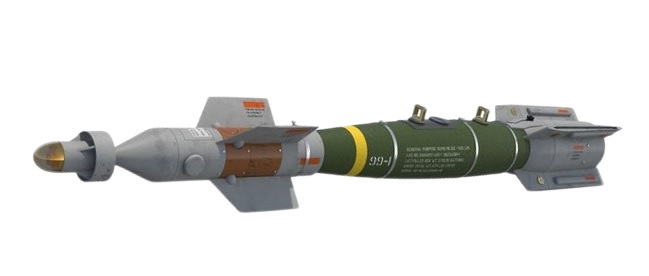
One of the advantages of the GBU-12 Paveway II is its accuracy. It has a circular error probable (CEP) of less than 10 meters, which means that it has a high probability of hitting its intended target. It can be used against a variety of ground targets, including buildings, bunkers, and vehicles.
6. GAU-22/A Gatling Gun
The GAU-22/A is a 25mm Gatling gun developed by General Dynamics for use in the F-35 Lightning II Joint Strike Fighter. It is a smaller and lighter version of the GAU-12/U Equalizer cannon used in the AV-8B Harrier II aircraft.
The GAU-22/A is an internal gun system that is mounted in the F-35’s weapons bay. It is designed to provide close air support and air-to-air combat capabilities. It has a rate of fire of 3,300 rounds per minute and carries 182 rounds of ammunition.
One of the key advantages of the GAU-22/A is its accuracy. It has a high degree of precision, which allows it to hit targets with great accuracy even at long ranges. It also has a low recoil, which makes it easier to control and reduces the risk of damage to the aircraft.
7. Small Diameter Bomb (SDB II)
The Small Diameter Bomb (SDB II) is a precision-guided munition developed by Raytheon for use by the United States Air Force (USAF) and other countries. It is a compact bomb designed to be carried by a wide range of aircraft, including the F-35 Lightning II, F-15E Strike Eagle, and B-2 Spirit.
The SDB II uses GPS and inertial navigation technology to accurately guide the bomb to its intended target. It also has a two-way datalink that allows it to receive updated target information from the aircraft or ground-based operators, and to send information back to the operators.
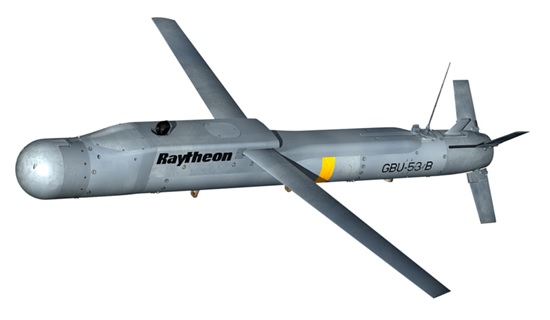
One of the key features of the SDB II is its ability to penetrate deep into hardened targets, such as bunkers and underground facilities. It has a powerful warhead that can destroy targets with minimal collateral damage, making it ideal for use in urban environments and other situations where precision is critical.
Lockheed Martins F-35 Stealth Fighter
Lockheed Martin F-35 Fighter Jet Cockpit
The cockpit of the F-35 Lightning II is designed to provide the pilot with enhanced situational awareness and is equipped with advanced avionics and sensor systems.
the F-35 cockpit is designed to provide the pilot with a high degree of situational awareness and to enable the aircraft to operate in a networked environment. The advanced avionics and sensor systems integrated into the cockpit make the F-35 one of the most advanced fighter aircraft in the world.
Some of the key features of the F-35 cockpit include:
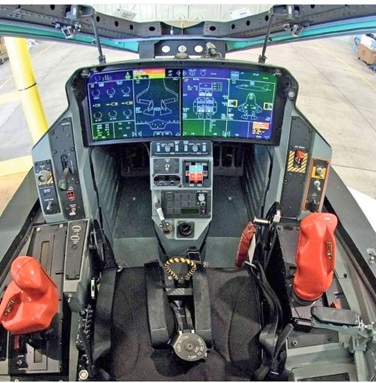
1. Large-Area Display
The F-35 cockpit features a large-area display that provides the pilot with a comprehensive view of the aircraft’s systems and the surrounding environment. The display is designed to be easy to read and provides the pilot with a high level of situational awareness.
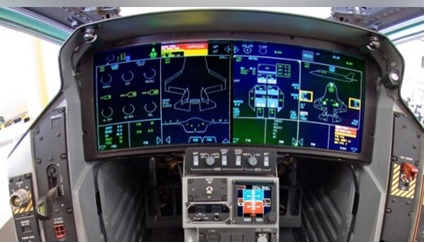
2. Helmet Mounted Display System (HMDS)
The F-35 Helmet Mounted Display System (HMDS) is a sophisticated piece of technology used in the Lockheed Martin F-35 Lightning II fighter jet. It provides pilots with real-time situational awareness by displaying critical flight and mission information directly on the pilot’s helmet visor.
The HMDS consists of a helmet-mounted display unit, a modular computing unit, and a high-definition camera system. The helmet-mounted display unit is a lightweight helmet that integrates a transparent visor, an optical head tracker, and a high-resolution display.
The modular computing unit is a compact computer system that processes data from the aircraft’s sensors and feeds it to the helmet-mounted display unit. The high-definition camera system provides the pilot with a 360-degree view of the surrounding environment.

The HMDS allows pilots to see critical information, such as airspeed, altitude, heading, and weapon status, without having to look down at cockpit displays. It also provides pilots with enhanced situational awareness by displaying information from sensors such as radar, infrared, and electro-optical targeting systems. Additionally, the HMDS includes a night vision mode, which uses infrared sensors to display a clear image of the environment even in complete darkness.
The F-35 HMDS is one of the most advanced helmet-mounted display systems in the world, and it plays a critical role in the aircraft’s ability to perform a wide range of missions, from air-to-air combat to ground attack and reconnaissance.
3. Voice Activated Controls
The F-35 cockpit is equipped with voice-activated controls that allow the pilot to operate the aircraft’s systems without taking their hands off the controls or looking away from the target.
4. Advanced Sensor Fusion
The F-35 cockpit features advanced sensor fusion technology that combines data from the aircraft’s sensors and avionics systems to provide the pilot with a comprehensive picture of the battlefield.
5. Integrated Communications
The F-35 cockpit is equipped with an integrated communications system that allows the pilot to communicate with other aircraft and ground stations.
Lockheed Martins F-35 Stealth Fighter
F-35 Variants
The F-35 Lightning II is a family of single-seat, single-engine, fifth-generation multirole fighters designed and manufactured by Lockheed Martin.
Each variant has slightly different specifications and capabilities, but they all share a common airframe and many of the same components.
There are three main variants of the F-35:
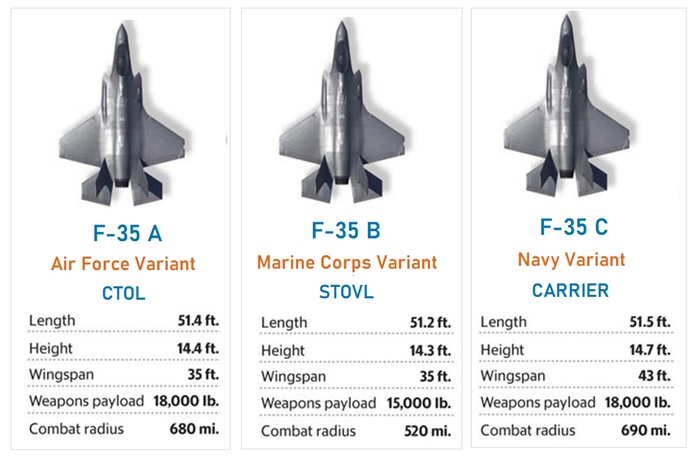
Lockheed Martins F-35 Stealth Fighter
- F-35A: This is the conventional takeoff and landing (CTOL) variant that is used by the United States Air Force (USAF) and many other countries. It has a range of approximately 1,200 nautical miles and is designed to operate from conventional runways.
- F-35B: This is the short takeoff and vertical landing (STOVL) variant that is used by the United States Marine Corps (USMC) and the United Kingdom’s Royal Navy. It has a range of approximately 900 nautical miles and is designed to operate from short runways and small aircraft carriers.
- F-35C: This is the carrier-based variant that is used by the United States Navy (USN). It has a range of approximately 1,200 nautical miles and is designed to operate from large aircraft carriers.
F-35A
F-35A Variant - Conventional Takeoff And Landing (CTOL)
The F-35A is the conventional takeoff and landing (CTOL) variant of the F-35 Lightning II fighter aircraft. It is designed for the United States Air Force (USAF) and many other countries that require an aircraft capable of operating from conventional runways.
The F-35A has a maximum speed of Mach 1.6 and a combat range of approximately 1,200 nautical miles. It is equipped with a single F135 engine that provides up to 43,000 pounds of thrust, allowing the aircraft to reach a maximum altitude of 50,000 feet.
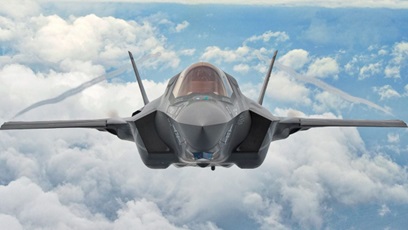
The F-35A is designed to conduct a wide range of missions, including air-to-air and air-to-ground operations. It is equipped with advanced sensors and avionics that provide pilots with unprecedented situational awareness, and it is capable of carrying a wide range of weapons, including air-to-air missiles, air-to-ground missiles, and bombs.
In terms of its stealth capabilities, the F-35A is designed to have a low radar cross-section, which makes it difficult for enemy air defenses to detect and track the aircraft. It is also equipped with advanced electronic warfare systems that can detect and jam enemy radar and communications systems.
F-35B
F-35B Variant - Short Takeoff And Vertical Landing (STOVL)
The F-35B is the short takeoff and vertical landing (STOVL) variant of the F-35 Lightning II fighter aircraft. It is designed for the United States Marine Corps (USMC) and the United Kingdom’s Royal Navy, which require an aircraft capable of operating from short runways and small aircraft carriers.
The F-35B has a maximum speed of Mach 1.6 and a combat range of approximately 900 nautical miles. It is equipped with a single F135 engine that provides up to 41,000 pounds of thrust, allowing the aircraft to take off from a short runway and land vertically.
The F-35B is designed to conduct a wide range of missions, including air-to-air and air-to-ground operations. It is equipped with advanced sensors and avionics that provide pilots with unprecedented situational awareness, and it is capable of carrying a wide range of weapons, including air-to-air missiles, air-to-ground missiles, and bombs.
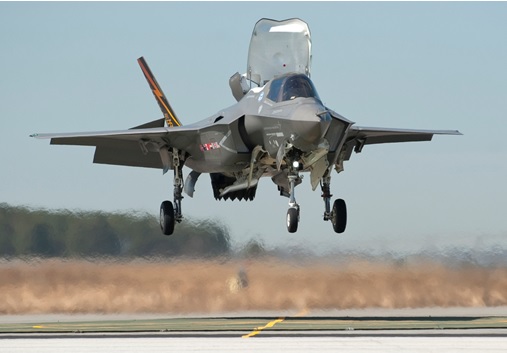
In terms of its stealth capabilities, the F-35B is designed to have a low radar cross-section, which makes it difficult for enemy air defenses to detect and track the aircraft. It is also equipped with advanced electronic warfare systems that can detect and jam enemy radar and communications systems.
The F-35B is unique in its ability to operate from short runways and small aircraft carriers, which gives it greater flexibility and versatility than other fighter aircraft. It is capable of operating from a variety of ships, including amphibious assault ships and small aircraft carriers, which allows it to support Marine Corps operations from anywhere in the world.
F-35C
F-35C Variant - Optimized For Carrier Based Operations
The F-35C is the carrier-based variant of the F-35 Lightning II fighter aircraft. It is designed for the United States Navy (USN) and is optimized for operations from large aircraft carriers.
The F-35C has a maximum speed of Mach 1.6 and a combat range of approximately 1,200 nautical miles. It is equipped with a single F135 engine that provides up to 43,000 pounds of thrust, allowing the aircraft to reach a maximum altitude of 50,000 feet.
The F-35C is designed to conduct a wide range of missions, including air-to-air and air-to-ground operations. It is equipped with advanced sensors and avionics that provide pilots with unprecedented situational awareness, and it is capable of carrying a wide range of weapons, including air-to-air missiles, air-to-ground missiles, and bombs.
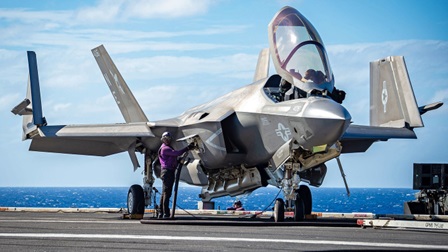
In terms of its stealth capabilities, the F-35C is designed to have a low radar cross-section, which makes it difficult for enemy air defenses to detect and track the aircraft. It is also equipped with advanced electronic warfare systems that can detect and jam enemy radar and communications systems.
The F-35C is optimized for operations from large aircraft carriers, which gives it the ability to project power over long distances and support naval operations around the world. It is capable of operating from a variety of carriers, including the USN’s Nimitz-class and Ford-class aircraft carriers, and it is designed to replace the USN’s legacy fighter aircraft, such as the F/A-18 Hornet and the F-14 Tomcat.
Lockheed Martins F-35 Stealth Fighter
F-35 Engine
The F-35 is a fifth-generation stealth fighter aircraft that is designed to provide advanced combat capabilities to the United States military. One of the most critical components of this aircraft is its engine, which is a powerful and advanced piece of technology in its own right.
The F-35 engine, also known as the Pratt & Whitney F135, is a two-spool afterburning turbofan engine that is designed to provide exceptional performance in a variety of mission profiles. The engine is a derivative of the F119 engine that powers the F-22 Raptor, but it has been extensively modified and improved to meet the specific requirements of the F-35.
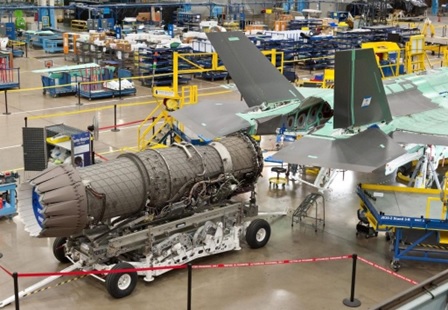
The F135 engine is a highly advanced piece of technology that features advanced materials, such as ceramic matrix composites and titanium aluminides, that allow it to operate at high temperatures and pressures while maintaining exceptional durability and reliability. It also features a unique three-stage fan and a state-of-the-art augmenter, which provide exceptional thrust while maintaining low observability.
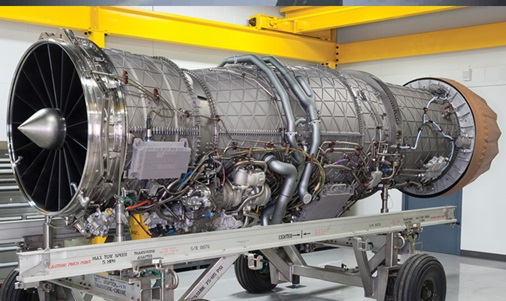
The F-35 engine is capable of producing up to 43,000 pounds of thrust, which allows the F-35 to achieve a maximum speed of Mach 1.6 and a maximum altitude of 50,000 feet. It also features advanced electronic controls and a digital engine management system, which provide exceptional control and monitoring capabilities.
The F-35 engine is designed to operate in a variety of environments and mission profiles, including air-to-air combat, air-to-ground attacks, and reconnaissance missions. It is also designed to operate in a wide range of weather conditions and is capable of operating from both land-based and carrier-based platforms.
The F-35 engine is a highly advanced piece of technology that provides exceptional performance and capabilities to the F-35 fighter aircraft. Its advanced materials, unique design, and state-of-the-art controls make it a critical component of one of the most advanced fighter aircraft in the world.

